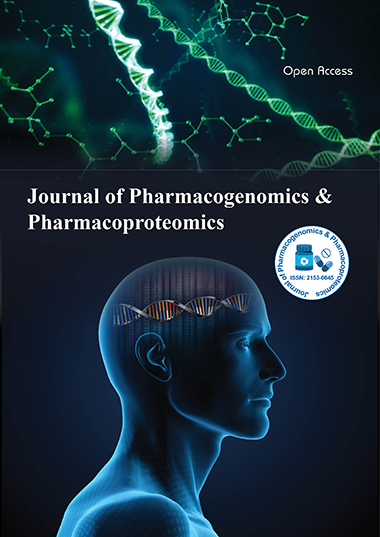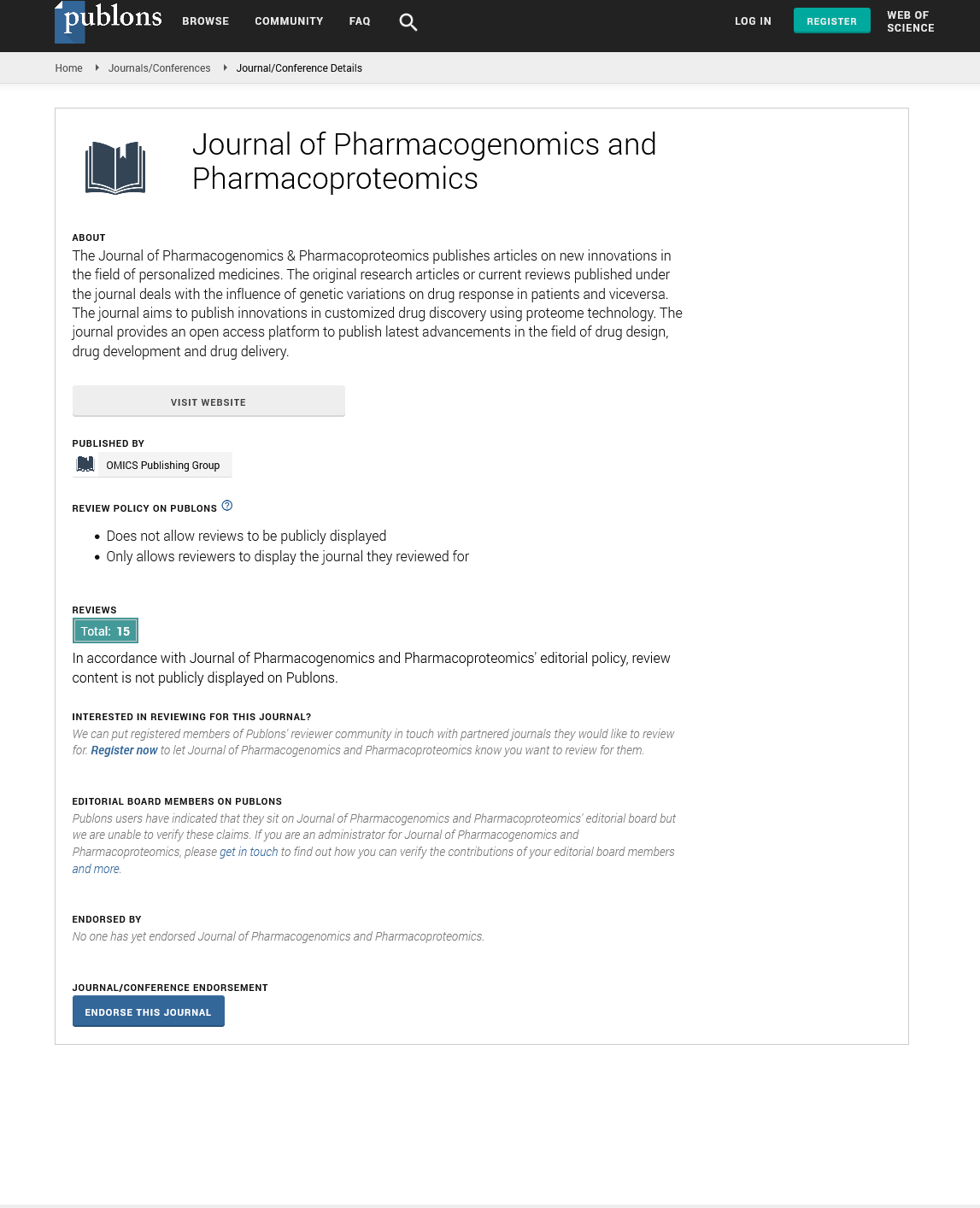Indexed In
- Open J Gate
- Genamics JournalSeek
- Academic Keys
- JournalTOCs
- ResearchBible
- Electronic Journals Library
- RefSeek
- Hamdard University
- EBSCO A-Z
- OCLC- WorldCat
- Proquest Summons
- SWB online catalog
- Virtual Library of Biology (vifabio)
- Publons
- MIAR
- Euro Pub
- Google Scholar
Useful Links
Share This Page
Journal Flyer

Open Access Journals
- Agri and Aquaculture
- Biochemistry
- Bioinformatics & Systems Biology
- Business & Management
- Chemistry
- Clinical Sciences
- Engineering
- Food & Nutrition
- General Science
- Genetics & Molecular Biology
- Immunology & Microbiology
- Medical Sciences
- Neuroscience & Psychology
- Nursing & Health Care
- Pharmaceutical Sciences
Commentary - (2022) Volume 13, Issue 3
Epigenomics: An Approach to Understand Complex Diseases
Brad Beauchet*Received: 02-May-2022, Manuscript No. JPP-22-16790; Editor assigned: 06-May-2022, Pre QC No. JPP-22-16790(PQ); Reviewed: 20-May-2022, QC No. JPP-22-16790; Revised: 27-May-2022, Manuscript No. JPP-22-16790(R); Published: 06-Jun-2022, DOI: 10.35248/2153-0645.22.13.014
Description
Epigenetics is a branch of genetics that studies heritable modifications rather than mutations in the main DNA sequence. Conrad Waddington, a scientist, invented the term "Epigenetics" in 1940, defining it as "the interactions of genes with their environment that bring the phenotypic into being." Epigenetics eventually gave way to epigenomics, which is the study of epigenetic alterations across an individual's complete genome. Epigenomics was recently made possible by the advent of new sequencing tools and technologies like as DNA microarrays, lowcost whole-genome sequencing, and databases for studying whole genomes.
The human genome has about 25,000 genes that code for all of the proteins and other components that make up a person. The epigenome is crucial to this huge collection of nucleotides because it dictates when and where certain proteins are created, as well as which cells or tissues they are produced in. "A reasonable comparison is to think of the epigenome as the software that guides the genomic hardware of a computer," says the researcher. Epigenetic marks are generated directly on DNA or on the proteins that bundle it in the nucleus. Epigenetics and epigenomics can help us understand how our environment influences our phenotype.
Several large scale studies and consortia are now ongoing in an attempt to define the multiple human epigenomes, similar to the recently finished ‘Human Genome project’, which decoded the whole sequence of the human genome. Such initiatives, however, will surely be more difficult than the ‘Human Genome Project’, because the epigenome changes over time and is influenced by a variety of factors such as ambient pollutants, medications and pharmaceuticals, age, and food. Furthermore, various organs' genomes contain different epigenetic markers. As a result, epigenomics necessitates the detection of differences not only between people, but also between tissues, developmental stages, and disease types. DNA methylation, in which a methyl group is attached to a cytosine residue and the cytosine is transformed into 5-methylcytosine, is one of the most researched epigenetic mechanisms. Researchers currently have a variety of approaches for detecting such methylation alterations across the entire genome.
The use of antibodies to 5-methylcytosine is one approach used in the investigation of methylation. After breaking up genomic DNA, scientists can employ these antibodies to extract methylation cytosine-containing DNA fragments. Purified antibody bound DNA is then amplified, tagged with a fluorescent tag, and placed to the surface of a DNA microarray comprising probes from all throughout the genome. A signal is generated when a fluorescently labelled fragment of DNA binds to a specific probe in a microarray. The signal can then be used to determine where the probe maps within the genome, showing the location of DNA methylation.
A technique of Methylated DNA Immuno-Precipitation (MeDIP), to compare methylation levels in normal and malignant human cell lines. Scientists discovered that the methylation patterns in the two types of cells are comparable, but they also discovered distinct areas of differential methylation on various chromosomes. Normal skin cells (particularly, fibroblasts) and SW48 cancer cells have different levels of methylation in one area on the long arm of Chromosome 3 (3q).
The scientists discovered that the area on chromosome 3q that is hypomethylated in the cancer cell line had few genes by looking at a genetic database that specifies where genes are located in the genome. Other research has found that in cancer cells, the promoter regions of genes become more methylation. When cytosine is close to guanosine in humans, it is frequently methylated. A CpG dinucleotide is the name for this type of arrangement. The genome contains numerous CpG dinucleotides, the majority of which are methylated. CpG islands are collections of unmethylated CpG dinucleotides that frequently appear in the regulatory sections of genes. When the appropriate transcription factors are present, unmethylated CpG islands allow genes to be transcribed.
Citation: Beauchet B (2022) Epigenomics: An Approach to Understand Complex Diseases. J Pharmacogenom Pharmacoproteomics. 13:014.
Copyright: © 2022 Beauchet B. This is an open-access article distributed under the terms of the Creative Commons Attribution License, which permits unrestricted use, distribution, and reproduction in any medium, provided the original author and source are credited.

